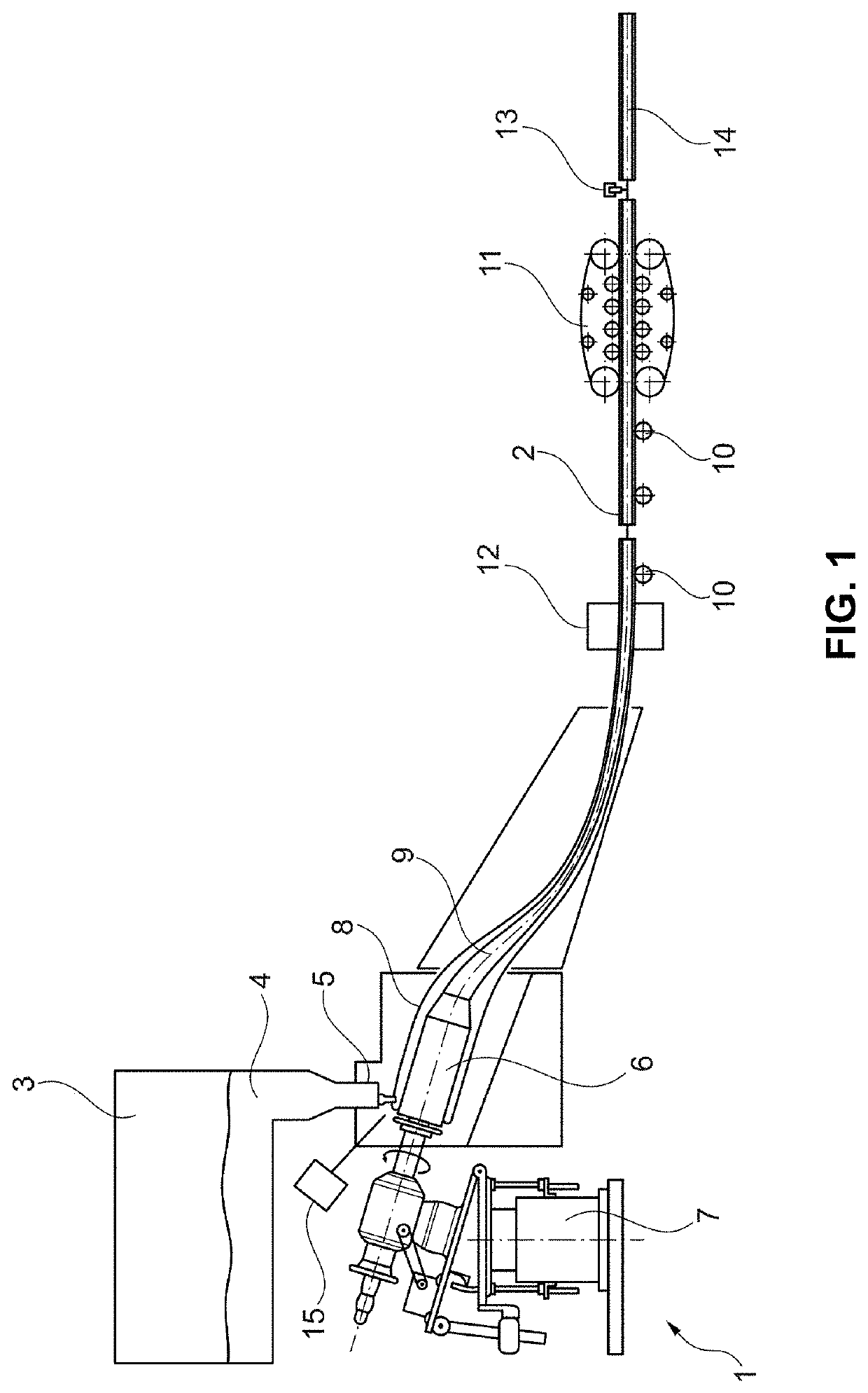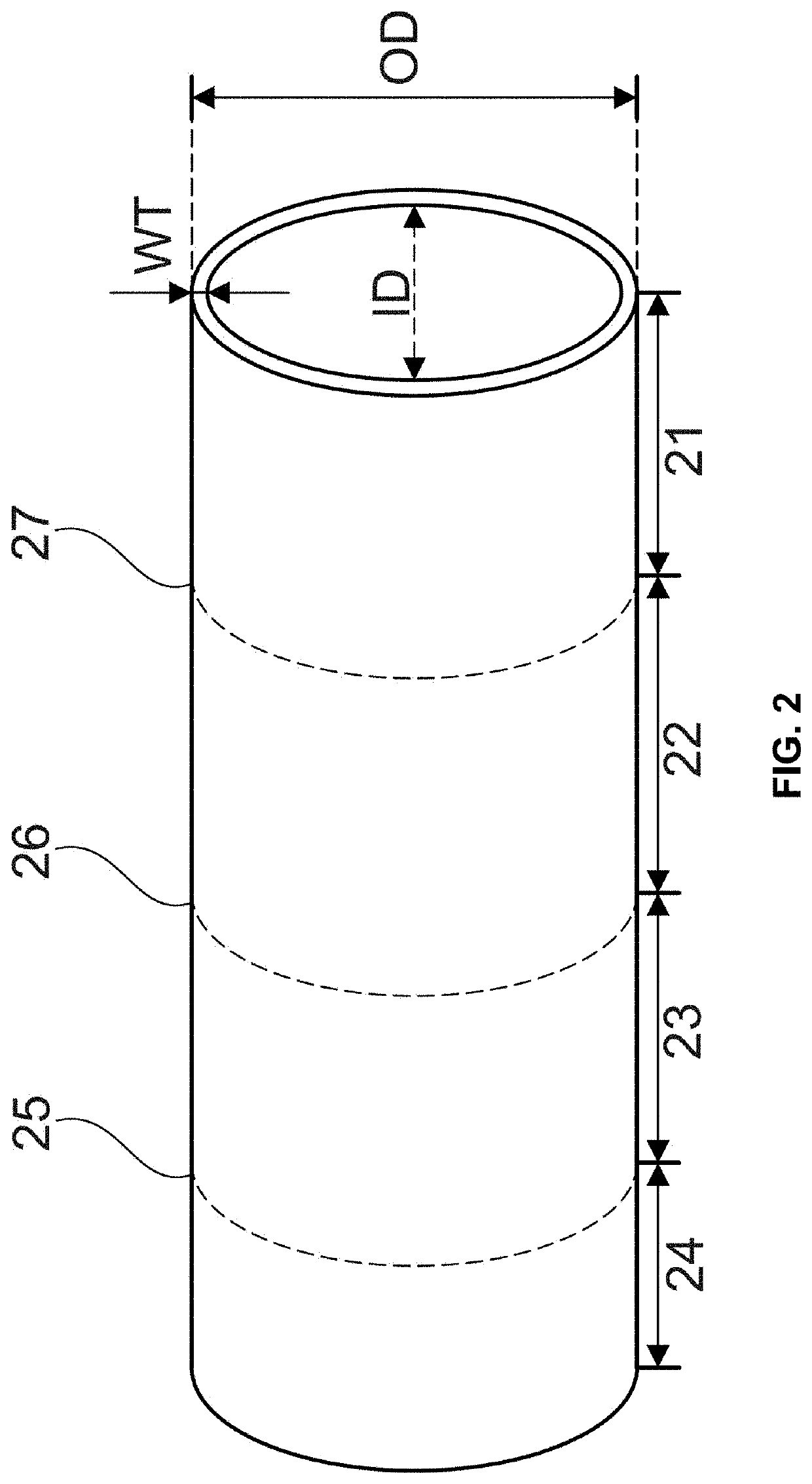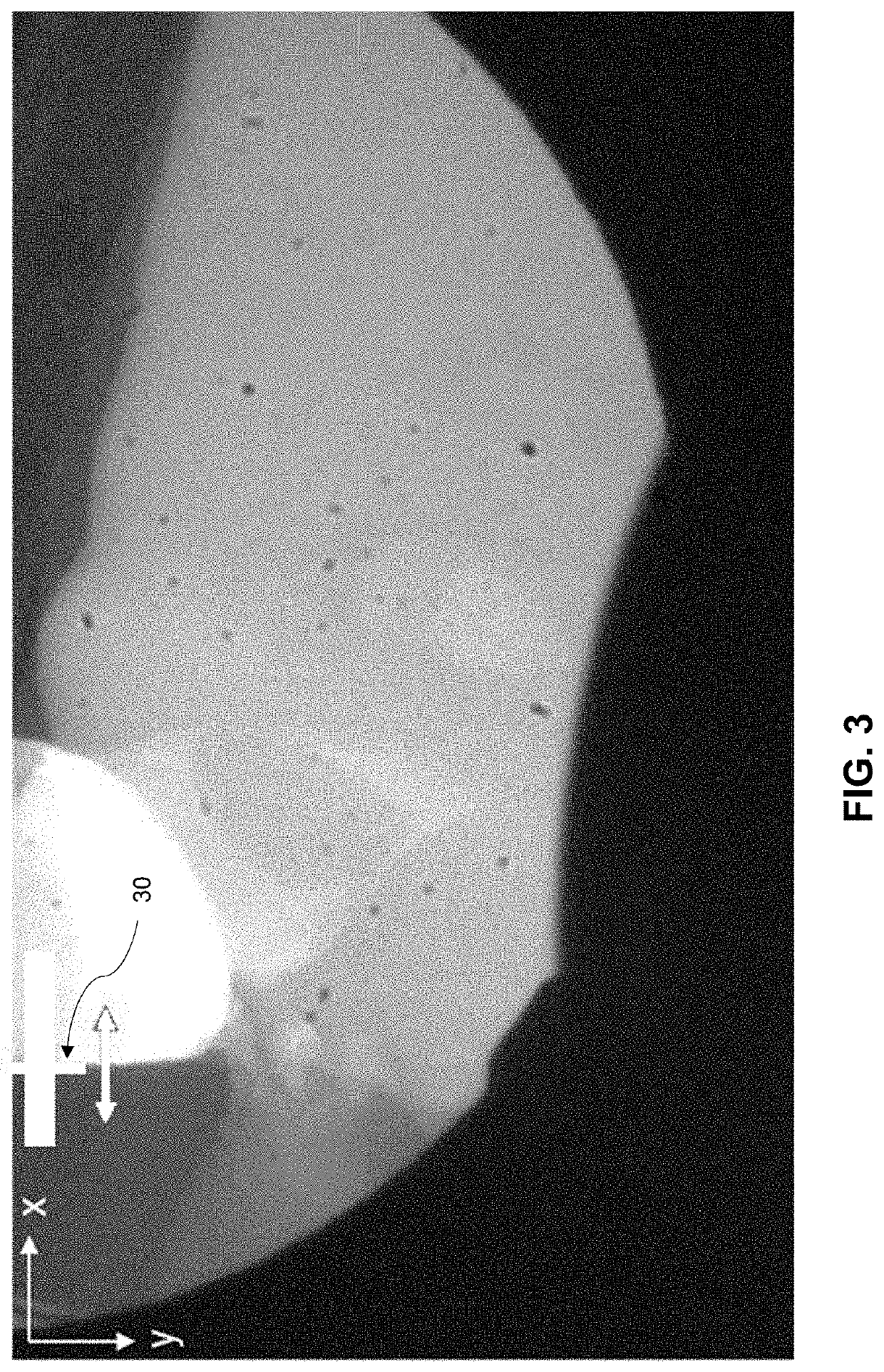Glass tube
- Summary
- Abstract
- Description
- Claims
- Application Information
AI Technical Summary
Benefits of technology
Problems solved by technology
Method used
Image
Examples
example 1
[0092]A glass tube 14 of 1.5 m length was prepared using the Danner method described in this disclosure. The glass processed in this manner had the following VFT constants: A=−1.41; B=5047.3; T0=224.7° C.
[0093]Three cross-sectional area values along the length of the corresponding glass tube 14 were determined. The first value was determined by measuring the outer diameter and the wall thickness of a first cross-section 25, the second value was determined by measuring the outer diameter and the wall thickness of a second cross-section 26 and the third value was determined by measuring the outer diameter and the wall thickness of a third cross-section 27. The sizes of the three cross-sectional areas were compared to determine which was the largest of the three (QFmax), and which was the smallest (QFmin). Measurements were repeated for three tubes. For Tube 1, the highest cross-sectional area QFmax was measured at the first cross-section 25. The lowest cross-sectional area QFmin was m...
example 2
[0094]Glass tubes 14 were produced according to the Danner method. During operation, the spatial variation of the glass strand (FIG. 3) was monitored using a camera 15. The spatial variation is the movement of the edge 30 of the glass strand as the glass flows onto the conical mandrel 6. FIG. 5 shows the distribution of the X-position of the black-white-edge 30 in a first time interval. In this first interval, the rotational speed of the conical mandrel 6 was 9.7 rpm and the spatial variation σ was about 2.35 pixels.
[0095]In a second time interval, the rotational speed was adjusted to reduce the spatial variation σ of the edge 30 of the glass strand. After adjustment, the rotational speed was 10.3 rpm and the spatial variation was reduced to 1.35 pixels.
[0096]The first interval had a broad distribution of locations of the edge of the glass strand, i.e. stronger movement of the glass strand in the wetting zone. The second interval had a narrower distribution. Broad and narrow distrib...
PUM
| Property | Measurement | Unit |
|---|---|---|
| Temperature | aaaaa | aaaaa |
| Temperature | aaaaa | aaaaa |
| Length | aaaaa | aaaaa |
Abstract
Description
Claims
Application Information
 Login to View More
Login to View More - R&D
- Intellectual Property
- Life Sciences
- Materials
- Tech Scout
- Unparalleled Data Quality
- Higher Quality Content
- 60% Fewer Hallucinations
Browse by: Latest US Patents, China's latest patents, Technical Efficacy Thesaurus, Application Domain, Technology Topic, Popular Technical Reports.
© 2025 PatSnap. All rights reserved.Legal|Privacy policy|Modern Slavery Act Transparency Statement|Sitemap|About US| Contact US: help@patsnap.com



